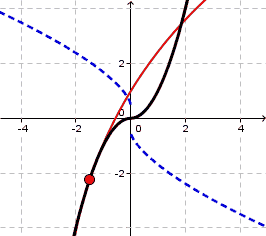How does one visualize a function with a discontinuous second derivative?
It will be hard to distinguish $C^1$ and $C^2$ functions visually in general. One thought is that if $f'$ is continuous whereas $f''$ has a point of discontinuity then the signed radius of curvature will have so too, the signed radius of curvature being $$ R=\frac{\left(1+f'(x)^2\right)^{3/2}}{f''(x)} $$ where normally $|R|$ is referred to as the radius of curvature. In your example this signed radius of curvature jumps from $-\frac{1}{2}$ to $+\frac{1}{2}$ showing that the center of the osculating circle jumps from $(0,-0.5)$ to $(0,+0.5)$ at $x=0$:

For $g(x)=x^3$ something different happens. Though the radius of curvature changes sign at $x=0$ it changes via limits of $-\infty$ and $+\infty$ since $g''(x)=0$. In general, a $C^2$ curve has to 'straighten out any curvature' before curving in a different direction.
Also sudden changes in curvature will not be allowed such as for instance the curve $h(x)=x^4$ for $x<0$ and $h(x)=x^2$ for $x\geq 0$ which has $h''(x)=12x^2$ for $x<0$ and $h''(x)=2$ for $x>0$ so that $h''(x)$ has the ambiguity of choosing between the value $0$ and $2$ for $x=0$.
Nevertheless this is a very subtle property when looking at the curves.